The larvae of butterflies, skippers, and moths of the order Lepidoptera are generally known as caterpillars. Caterpillars come in a diversity of sizes, shapes, and colors. The most common form has a conspicuous head, a thorax with three pairs of legs, and an abdomen with five pairs of prolegs that bear crochets (hooks) (Fig. 1) that enable the caterpillar to cling tightly to or wedge itself between materials. In fact, some of the giant silk moth caterpillars (Saturniidae) can cling so tightly to a twig that a proleg can be ripped from the body if they are pulled too hard. A few other orders of insects contain larvae that are caterpillar-like, but only the larvae of the leaf-feeding sawflies (Hymenoptera) are commonly encountered. They are easily mistaken for caterpillars, but they usually feed in groups (as do some caterpillars), rear up when disturbed, have more than five pairs of prolegs on the abdomen, and never have crochets on the prolegs.
BIOLOGY AND ECOLOGY
Caterpillars are commonly encountered because many are leaf-feeders and are not concealed feeders, although they may be cryptically shaped or colored. The realistic twig mimicry (Fig. 2 ) and behavior found in some inchworms (Geometridae) are complete with
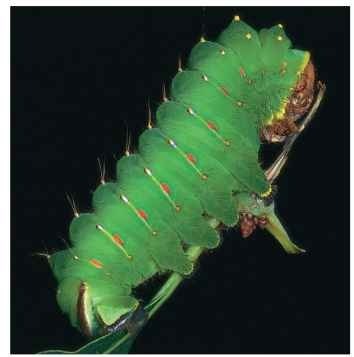
FIGURE 1 Caterpillar of the polyphemus moth, Antheraea polyphemus, showing the five pairs of prolegs bearing crochets (hooks).

FIGURE 2 Twig-mimic inchworm caterpillar of a moth (Geometridae).
body markings that resemble bark irregularities, scars, and stipules. Another excellent mimic is the caterpillar of the orangedog, Papilio cresphontes, whose black and white larvae resemble bird droppings in all instars (Fig. 3) . Some other swallowtail caterpillars resemble bird droppings in the early instars, whereas the later instars change to a greenish color (with black and orange, or yellow, markings) that camouflage them on their host plants. One of the most unusual diet-induced camouflage systems is that of the geometrid moth, Nemoria arizonaria. This moth has two generations, the first feeds on oak catkins in the spring and takes on the shape and colors of the catkins; the second generation hatches when the catkins are gone and only leaves are available for food, resulting in the caterpillar being a twig mimic.
Nearly all species of plants are fed upon by caterpillars, and many caterpillars are important pests. They also form galls; are scavengers
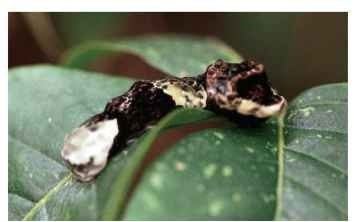
FIGURE 3 “Bird dropping” mimicry by the caterpillar of the orangedog, Papilio cresphontes.
on dead plant materials, fungi, and animal materials such as feathers, wool, or fur (clothes moths, Tineidae); and some are important pests of stored products (meal moths, Pyralidae). Some larvae of the family Pyralidae are truly aquatic and have gills, and some caterpillars of other families feed in or on aquatic plants. A few caterpillars are predators such as the lycaenid butterfly, Feniseca tarquinius, which feeds on and among clusters of wooly aphids. Some tropical lycaenids are predators on ant larvae in their nests. The ants benefit from this arrangement by obtaining sweet secretions from the dorsal abdominal glands of the caterpillars. For other lycaenid caterpillars that feed on plants above ground, the relationship is clearly symbiotic, with the larvae providing secretions for the ants and the ants protecting the larvae from predators and parasitoids. Probably the most unusual predators are the Hawaiian geometrids in the genus Eupethecia, whose larvae strike backward with their enlarged thoracic legs, seizing any prey that touches their rear end.
Most caterpillars move by a wavelike movement of the legs from rear to front. However, those with reduced numbers of prolegs or none at all proceed in a different manner. The inchworms (Fig. 2), which usually have two pairs of prolegs, and the looper cutworms of the Noctuidae, which have only three or four pairs of prolegs, move by pulling the hind end close to the thoracic legs and then looping the body forward. Caterpillars of the Limacodidae (Fig. 4 ), the slug caterpillars, have no prolegs and move on sucker-like discs, gliding along in a manner similar to slugs.
Caterpillars may be aposematically colored to advertise that they are distasteful or poisonous. They may also bear diverse lobes, spines, horns, knobs, and urticating hairs or spines that may or may not be irritating in some way. Most caterpillars that feed in protected or concealed locations do not possess such structures or defenses. The ill-smelling secretions of the eversible, dorsal prothoracic glands (Fig. 5 ) of swallowtail butterfly caterpillars (Papilionidae) are well known, as are the stinging properties of saddleback caterpillars (Limacodidae). Some papilionid and sphingid caterpillars have large eyelike spots on the thorax and rear up their head and expanded thorax, thereby mimicking small snakes (Fig. 6). The distastefulness to birds of many monarch larvae and adults that feed on toxic species of milkweeds is common knowledge, but monarch larvae that have fed on the relatively nontoxic species of milkweeds are quite edible, as are their adults.
Caterpillars spin silk through a conspicuous labial spinneret. Species use silk in diverse ways, from webbing together leaves or other
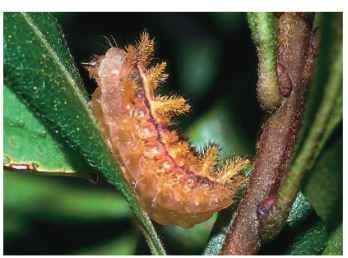
FIGURE 4 A slug caterpillar, Euclea delphinii (Limacodidae), showing the lack of prolegs and the sucker-like discs.
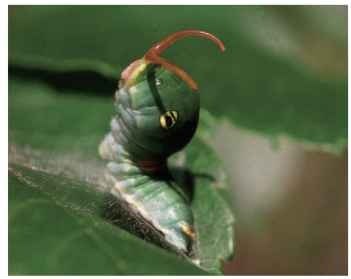
FIGURE 5 The ill-smelling, eversible, dorsal, prothoracic glands of a tiger swallowtail caterpillar, Papilio glaucus.
materials (Tortricidae, Pyralidae, and many others) to constructing webs [fall webworm (Arctiidae)], large “tents” of the tent caterpillars ( Fig. 7 ) (Lasiocampidae: Malacosoma), or silken tube shelters (some Pyralidae, Tineidae). Some, such as the casebearers (Coleophoridae), the bagworms (Psychidae), and the sackbearers (Mimallonidae), make tough, complex shelters that they carry with them. The “sack” of the mimallonid caterpillars is particularly interesting because it is extremely tough, with an opening at both ends that can be blocked by the caterpillar’s head or its hard anal plate, either of which fits tightly against either opening.
Many caterpillars spin cocoons in which they pupate, ranging from the tight and commercially valuable cocoons of the silkworm, Bombyx mori, to those of the gypsy moth, Lymantria dispar, which are at best a loose net of silk (even though it was originally brought to the United States because it was believed to be a good prospect for
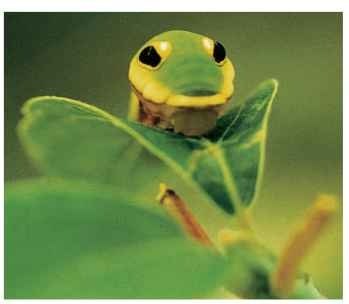
FIGURE 6 The snake-mimicking behavior of the spicebush swallowtail larva, Papilio troilus.

FIGURE 7 Tent of the western tent caterpillar, Malacosoma cali-fornicum (Lasiocampidae).
silk production). Other common caterpillars, such as those of sphinx moths, cutworms, and some saturniids, pupate in the ground or litter where they form cells that can be silk lined.
Caterpillars are occasionally an item of commerce. Canned caterpillars (gusanos) are eaten in (and sometimes imported from) Mexico. Tequila worms, usually in the family Megathymidae (giant skippers), were formerly imported in bottles of tequila from Mexico. If the tequila worm was well preserved, presumably the alcohol concentration was satisfactory.
